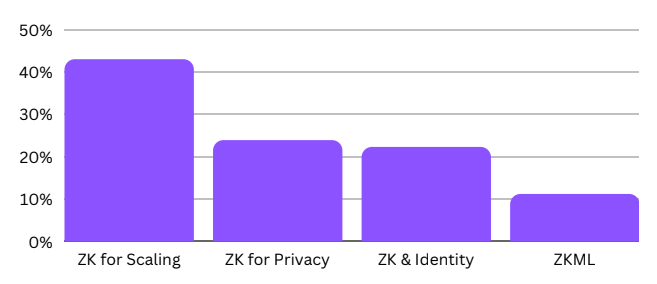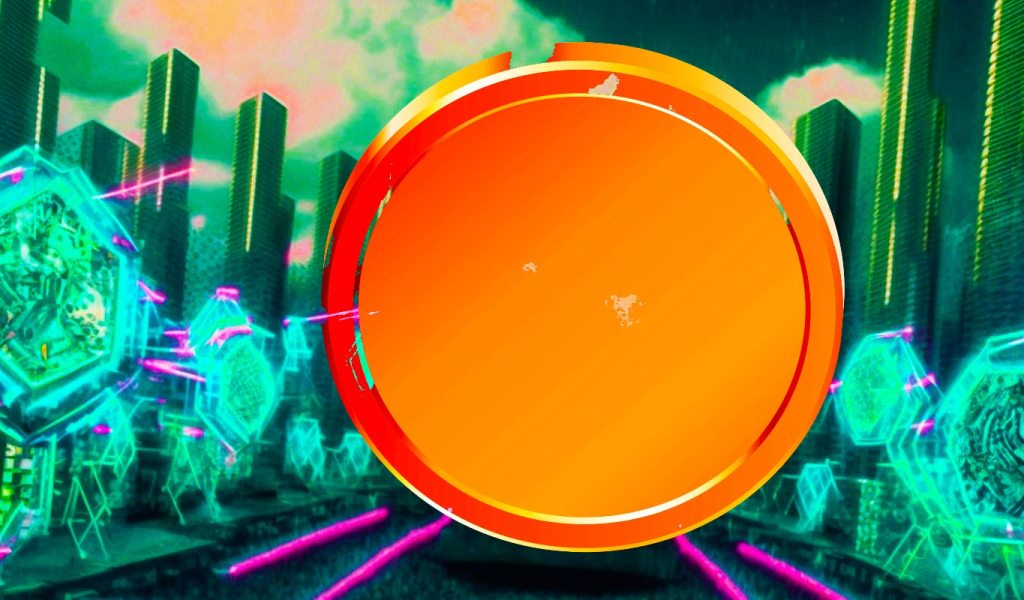
Ethereum scaling protocols drive zero-knowledge proof use in 2023

Ethereum scaling remains the primary use case behind zero-knowledge proofs, according to a report from ZKValidator.
Ethereum scaling protocols dominate the use of zero-knowledge rollups (ZK-rollups), with major launches, new research and healthy competition key points in a sector report published by ZKValidator.
The node infrastructure operator’s “State of ZK Q2” report reflects on significant events across the ZK ecosystem, with notable launches of ZK-powered layer 2’s highlighting the use of the technology for scaling in comparison with other market segments.
ZK-proofs use cryptography to allow one party to prove to another party that certain information is correct without revealing any data. They present a solution to trust and privacy in digital environments, and have been pivotal in scaling layer-1 blockchain protocols.
A poll put to the 18,000 followers of the Zero Knowledge Podcast provided a sample for a community gauge on the most important applications of ZK-proofs. Of the respondents, 42% selected “ZK for Scaling” as the segment that would experience the highest growth in the coming 12 months.

ZK for privacy and identity followed at 23.8% and 22.2%, respectively, while zero-knowledge machine learning was the least selected segment.
The poll reflects the real-world applications of ZK-proofs, with several major Ethereum scaling protocols hitting mainnet in the first half of 2023.
This includes Polygon’s announcement of its forthcoming “2.0” multichain system, which will use ZK-proofs to transfer assets between networks and zkSync Era’s ZK Stack, which will allow developers to build ZK-rollups and proprietary layer-3 “hyperchains.“
ConsenSys also began onboarding partners to its mainnet Linea network on July 11. Linea is another prominent layer 2 that allows developers to build or migrate decentralized applications for Ethereum.
Related: Are ZK-proofs the answer to Bitcoin’s Ordinal and BRC-20 problem?
The sector has also attracted investment across several segments, including new zk-based layer 2’s and zkEthereum Virtual Machines (zkEVMs), as well as ZK-proofs for off-chain computation.
Ethereum scaling firm StarkWare, which helped pioneer zk technology, and the Ethereum co-founder Vitalik Buterin, invested in Kakarot — a zkEVM running on StarkWare’s technology that aims to build layer-3 applications.
The report also highlights a $115 million raise by Worldcoin to continue the development of its zk-powered digital identity application and ecosystem. Swiss nonprofit Anoma Foundation also features in the report after its latest $25 million raise to continue building its third-generation blockchain architecture for decentralized applications.
Collect this article as an NFT to preserve this moment in history and show your support for independent journalism in the crypto space.
Magazine: Here’s how Ethereum’s ZK-rollups can become interoperable
Go to Source
Author: Gareth Jenkinson







